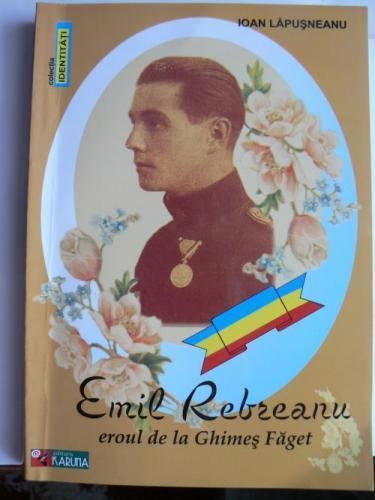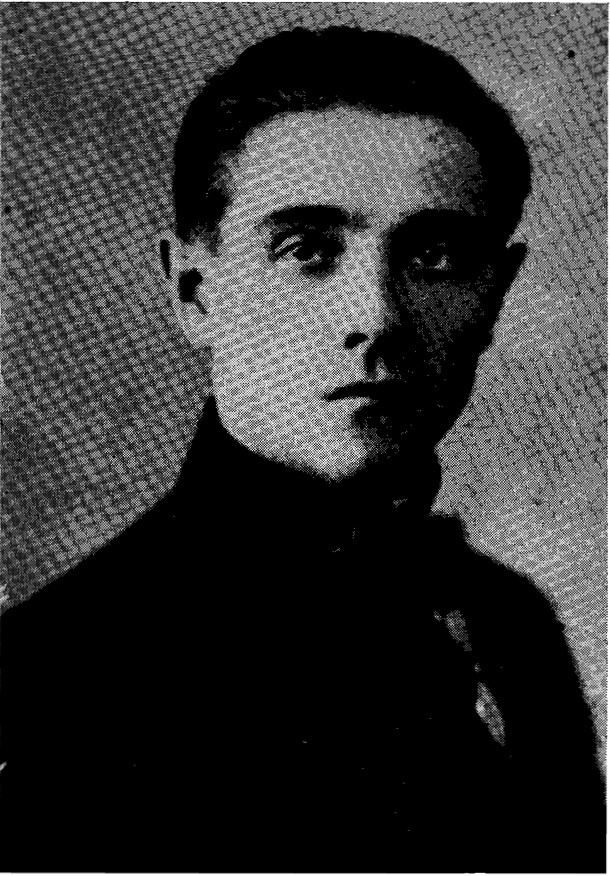Name Emil Rebreanu Role Military officer | Died May 14, 1917 Siblings Liviu Rebreanu | |
 | ||
Parents Ludovica Diuganu, Vasile Rebreanu | ||
Talent si efort emil rebreanu 22 06 2015
Emil Rebreanu (December 17, 1891 – May 14, 1917) was an Austro-Hungarian Romanian military officer executed during World War I. The protagonist in Forest of the Hanged, a 1922 novel by his brother Liviu Rebreanu, is influenced by his experience.
Contents
- Talent si efort emil rebreanu 22 06 2015
- Damian draghici canta la monumentul lui emil rebreanu
- Biography
- Legacy
- References

Damian draghici canta la monumentul lui emil rebreanu
Biography
Rebreanu was born into a Greek-Catholic family in Major, Beszterce-Naszód County, now Maieru, Bistrița-Năsăud County, the fifth of fourteen children. He graduated from high school in 1913 and entered the Law faculty of Franz Joseph University in Cluj (Kolozsvár), but was forced to interrupt his studies upon the war's outbreak. Within a year of joining combat, he was made a second lieutenant in the Austro-Hungarian Army. He fought in Russia and Galicia, sustaining multiple injuries. Rebreanu also distinguished himself on the Italian Front and was given the Gold Medal for Bravery, the highest award granted by the Austrian command to a Romanian. However, once arrived on the Romanian Front, he decided that rather than fight against his fellow Romanians, he would join them. Constantin Kirițescu wrote: "Approaching Romanian soil, Rebreanu heard the secret call of his brothers' souls, whispering from beyond the trenches. Between his unnatural soldierly duty and his holy duty as a Romanian, Rebreanu heeded the latter."
Thus, on the night of May 10–11, 1917, having escaped from the infirmary where he was sequestered, he tried to cross the front to the Romanian side, bringing with him the plans for dividing and positioning Austro-Hungarian troops in the area. He was found and arrested by a patrol of imperial officers. Tried by a military court of the 16th Honvéd brigade, on May 12–13, on a charge of desertion and espionage, he was stripped of his rank and sentenced to death. As an added humiliation, the method was specified as hanging. According to eyewitnesses, before being executed at 10 p.m. on May 14, he pushed aside the executioner and before the multitude of soldiers, many of whom were Romanians brought there as a warning, shouted powerfully, "Long live Greater Romania!"
Legacy
Forest of the Hanged, a novel by his brother Liviu Rebreanu, is dedicated: "To the memory of my brother Emil, executed by the Austro-Hungarians, on the Romanian Front, in 1917." Liviu only learned of the execution in 1919, but quickly made several visits to the area, ultimately publishing the book in 1922. When he found out about the hanging, he had already been thinking of a novel drawing upon Emil's letters from the front describing the atmosphere there. Subsequently, he incorporated what Emil had undergone into the book. Nevertheless, he made important changes, describing his brother as an "unscrupulous nationalist" whose true character would have inspired "at most a patriotic poem". Among the individuals whom he fictionalized were successive love interests Elena Haliță ("Marta Domșa") and Ilona Lászlo ("Ilona Vidor", daughter of Făget's mayor in real life, but of a gravedigger in the book), as well as General Karg, who issued the death sentence. In October 1921, he was present at his brother's exhumation and reburial on the soil of the former Romanian Old Kingdom, which the latter had requested prior to being hanged.
A street in Bistrița bears Emil's name since 1995, one in Năsăud since 1996, and there is one in Onești as well. In 2012, a monument was unveiled in his memory at the border between Ghimeș-Făget and Palanca in Bacău County, around the place where the hanging is believed to have occurred. Four meters high and made of stone and bronze, one side depicts him in effigy, while the other shows Saint George.
